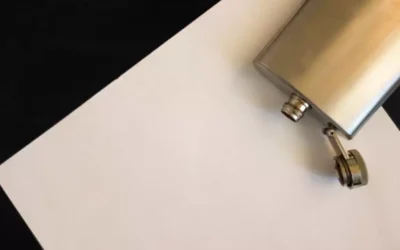An art therapist offers a deeper level of support than you can find on your own. Moreover, art therapy aids in personal growth by fostering a sense of accomplishment and self-worth. Completing an art project can boost your confidence and provide a visual reflection of your progress on the path to recovery. Whether it’s through painting, drawing, sculpting, or another art form, you’re empowered to set goals, make decisions, and celebrate your achievements.
Addiction Recovery: Seven Great Art Project Ideas

Create artwork using your nondominant hand. Give yourself grace and a chance to try something new and discover new ways to create. You can use this exercise to paint the things that empower you or the struggles you want to overcome on a rock. Freedom looks like … Engage in visualization to create a piece of artwork that represents your idea of freedom and what it means to you. Art therapy also fosters self-esteem and self-awareness, cultivates emotional resilience, promotes personal insight, aids in the reduction and resolution of conflicts, and advances change. We are here to help guide you on your path to recovery.
- In addition to helping clients explore recognized and subconscious feelings and issues, art therapy is also used to help build clients’ self-esteem and mental health.
- Create a drawing of your dreams.
- Art therapy stands as a transformative branch of therapy, uniquely blending the realms of art and psychology to support individuals on their journey to recovery.
- Your opponent must guess the drawing.
- Those may sound difficult, but these themes are used to bring about authentic, genuine feelings of pride and happiness.
- This creative exploration aids in uncovering deeper issues, memories, and feelings that might be difficult to articulate verbally.
Download 3 Free Positive CBT Exercises (PDF)
- This exercise develops fine motor skills.
- Our study addressed three specific components of art and music therapy in addiction treatment.
- Use watercolors to express your bodily state.
- In art therapy sessions, your art therapist will introduce you to a variety of art forms – from painting and drawing to sculpting and collage-making.
Glue the collage and paint the rest. Reference geometric shapes art therapy ideas. Draw a circle around the point in the center of the sheet https://ecosoberhouse.com/ and continue spinning in a circle for one minute. In the same way, inscribe the star in the circle. Monitor your sensations as you exercise.
- The box can also be a simple cardboard box or a box the individual has an attachment to, such as a small jewelry box.
- Draw your mandala art therapy ideas.
- Welcome to the world of art therapy, a form of expressive therapy that uses the creative process of making art to improve a person’s physical, mental, and emotional well-being.
- As you explore various pathways to sobriety and overall well-being, understanding the nuances of art therapy might unveil an enriching avenue for healing that resonates with your personal experiences.
- The journal provides a safe place for a client to express their authentic voice and practice honest self-expression (Knill & Atkins, 2020).
Conclusions: Enhancing SUD Recovery through Holistic Exercise Integration
The box itself can also be decorated to demonstrate the individual’s idea of self-care. Encourage the artists to add affirmations they enjoy on the outside. The box will hold art therapy ideas for addiction items the person can turn to for comfort during troubling or challenging times. While addiction knows no bounds, it disproportionately affects certain groups of people.
What Positive Effects Do Art and Creativity Bring to Addiction Recovery?
These detailed, science-based exercises will equip you or your clients with tools to find new pathways to reduce suffering and more effectively cope with life stressors. Mandala making or coloring can be a wonderfully meditative exercise for emotional expression, centering, and self-soothing. Self-portraiture using a range of materials can be very cathartic, and a series of self-portraits can reflect how a client sees themselves changing over time. These can be made by drawing, painting, mask making, sculpture, photography, or mixed media using a combination of these materials.
Individualized, evidence based treatment, to fit your needs.
Generally, people view art therapy as a therapeutic method to use with other forms of therapy. This is especially true for substance use disorders (SUDs), where ongoing recovery is so important. These therapists have specialized training in art therapy treatment for addiction and hold a master’s level degree or higher. It’s common for art therapists to also hold licensure in counseling or social work. Art therapy, which is overseen by a trained therapist, is an effective therapeutic technique. This form of therapy has the potential to positively impact the creator’s well-being by alleviating and improving mental, emotional and physical challenges.
How Iceland Got Teens to Say No to Drugs – The Atlantic
How Iceland Got Teens to Say No to Drugs.
Posted: Thu, 19 Jan 2017 08:00:00 GMT [source]

Recent Comments